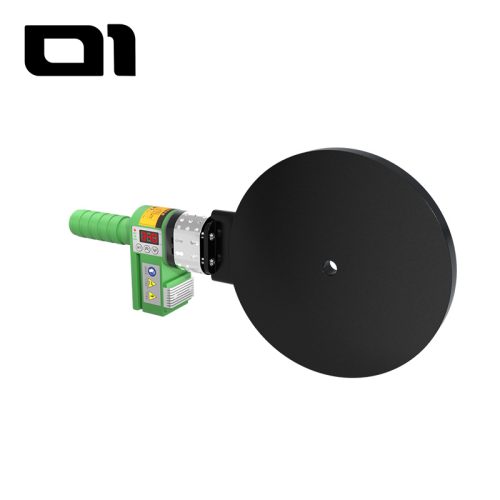When it comes to joining high-density polyethylene (HDPE) pipes, two popular methods stand out: socket welding and butt welding. Each technique has its own set of advantages and challenges, making it crucial to understand their differences and applications. In this article, we will explore socket welding and butt welding, comparing their processes, equipment, benefits, and best use cases. This will help you make an informed decision on the best approach for your HDPE pipe projects.
What Is HDPE Fusion Welding?
HDPE fusion welding refers to the process of joining two pieces of HDPE plastic pipe by heating and fusing them together. This process creates a seamless and robust joint, essential for ensuring the integrity and longevity of the pipeline.
Applications of HDPE Pipes
HDPE pipes are commonly used in various industries such as water supply, gas distribution, and sewage systems due to their durability, flexibility, and resistance to corrosion. Proper welding techniques are vital to ensure these pipes function efficiently without leaks or failures.
Socket Welding
Process Overview
Socket welding is a method that involves inserting the end of a pipe into a fitting, such as a coupling or reducer. The pipe and fitting are then heated and fused together.
Steps
- Preparation: Begin by cleaning the surfaces of both the pipe and the fitting to remove any dirt or debris. This ensures a clean weld.
- Heating: Use a poly welding equipment with a heating element to simultaneously heat the outer surface of the pipe and the inner surface of the fitting.
- Insertion: Once the surfaces are adequately heated, insert the pipe into the fitting to the marked depth.
- Cooling: Allow the joint to cool naturally, forming a strong and leak-proof connection.
Advantages
- Ease of Use: Socket welding is relatively simple and does not require highly specialized skills.
- Cost-Effective: The equipment and fittings for socket welding are generally less expensive than those required for butt welding.
- Ideal for Smaller Pipes: This method is suitable for joining smaller diameter pipes, making it perfect for domestic applications.
Limitations
- Limited to Smaller Sizes: Socket welding is not suitable for larger pipes, as it becomes difficult to maintain a reliable connection.
- Requires Additional Fittings: The need for fittings can increase material costs and complexity in certain projects.
Butt Welding
Process Overview
Butt welding is a technique where the ends of two pipes are aligned and heated simultaneously, allowing them to be fused directly together without the need for additional fittings.
Steps
- Alignment: Securely align the ends of the pipes using a butt welding machine to ensure a straight and even weld.
- Heating: Use the machine’s heating plate to uniformly heat the ends of the pipes until they reach the required fusion temperature.
- Fusion: Once heated, remove the heating plate and press the pipe ends together with consistent pressure.
- Cooling: Allow the joint to cool under pressure, forming a seamless and robust bond.
Advantages
- Strong Joints: Butt welding produces strong, homogeneous joints that are as strong as the rest of the pipe.
- No Need for Fittings: This method eliminates the need for additional fittings, reducing material costs.
- Suitable for Large Pipes: Butt welding is ideal for joining large diameter pipes, making it a preferred method for industrial applications.
Limitations
- Requires Skilled Operators: The precision and technique required for butt welding mean that skilled operators are essential.
- Higher Equipment Costs: The initial investment in a butt welding machine can be significant.
Comparison: Socket Welding vs. Butt Welding
Key Factors
- Pipe Size: For smaller pipes, socket welding is more practical, while butt welding is better suited for larger diameters.
- Project Scale: Butt welding is preferable for large-scale industrial projects, whereas socket welding is suitable for smaller installations.
- Cost: Consider both the equipment and material costs. Socket welding typically involves lower upfront costs, but butt welding can be more economical in the long run due to savings on fittings.
Best Use Cases
- Domestic Installations: For small domestic water supply systems, socket welding offers a straightforward and cost-effective solution.
- Industrial Pipelines: Large-diameter pipelines in industrial settings benefit from the strength and reliability of butt welded joints.
Conclusion
When choosing between socket welding and butt welding for HDPE pipe projects, it’s important to evaluate the specific requirements of your project. Consider factors such as pipe size, budget, and the expertise of your team. Both methods have their merits, and selecting the right one ensures a successful and long-lasting pipeline installation.
In summary, socket welding and butt welding are essential techniques for HDPE pipe installations. Understanding their differences and applications will help you make informed decisions that enhance the efficiency and reliability of your projects.
By mastering these techniques, you can ensure that your HDPE pipelines remain durable, leak-free, and ready to meet the demands of their intended applications.









